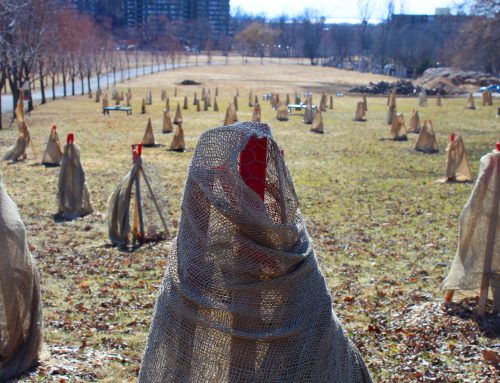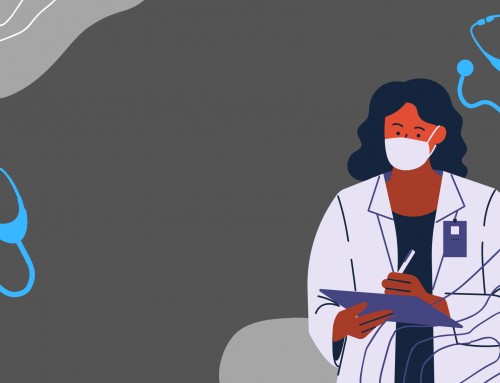Chantal Schromeda & Reina Ephrahim
Murray Levine has been living near Trudeau Airport for more than two decades but is worried it could be bad for his health. “Hearing that the level [of pollution] is four times that of downtown is shocking,” he says.
According to a recent study published by McGill’s department of Chemistry, carbon emissions in the air at the Trudeau airport are 400 per cent higher than carbon emissions coming from downtown Montreal.
The author of the study, McGill Professor Parisa Ariya, explains that airports are health hazards.
“Most of these airports are close to the cities, so they’re going to be a major source of pollutants in the cities,” she says.
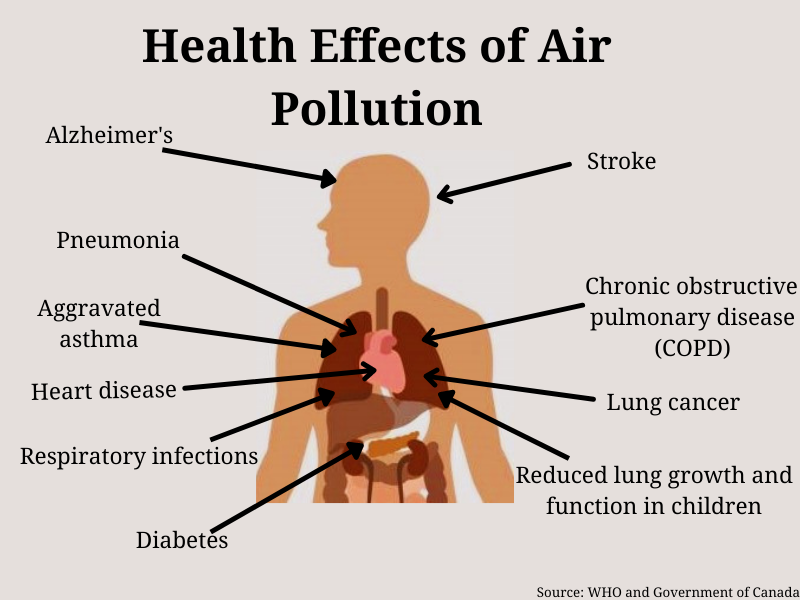
The health effects of air pollution on the body. Media by Chantal Schromeda.
The study also found that during the initial COVID-19 lockdown in 2020, the air pollution at the airport decreased by more than half. But when activity returned to normal, the carbon readings increased again.
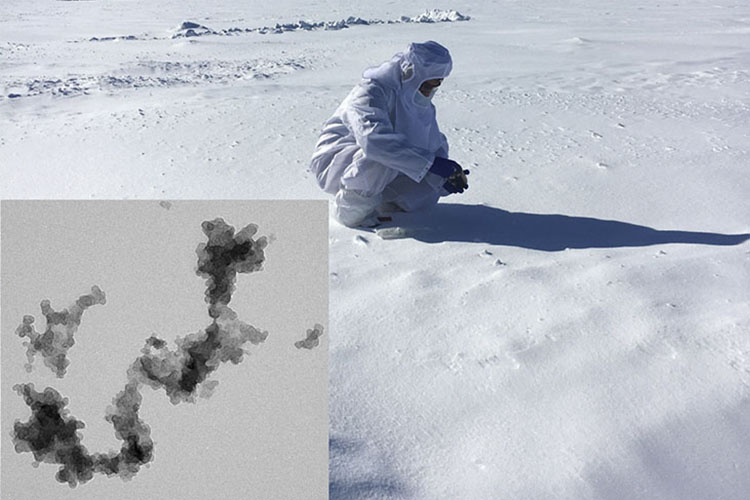
Parisa Ariya and Houjie Li collect snow during the winter months of 2020 to measure carbon levels. On the left is a microscopic image of carbon from the snow samples collected. Photo courtesy of the researchers.
David Kaiser, Public Health and Preventive Medicine specialist, says that exposure to air pollution is an important health issue that has significant health impacts on the health of Montrealers.
“Several measures would help to reduce exposure to air pollution,” he says. “Buffer zones between air pollution sources and residential neighbourhoods, reducing or eliminating use of wood-burning stoves, and reducing vehicle traffic.”
With the high concentration of carbon coming from the airport posing a health hazard to airport workers and residents living nearby, Levine believes the airport should be moved.
“I have long called for YUL to be in Mirabel,” he says. “Perhaps they should leave YUL for cargo if doing so would result in a really dramatic decrease in the levels of carbon.”
Air pollution is affecting the health of Montrealers. Video by Reina Ephrahim.
According to the World Health Organization, in 2019, 99 per cent of the world’s population lived in places where pollution exceeded air quality guidelines.
The main air pollutant responsible for health hazards is fine particulate matter consisting of particles smaller than 2.5 microns. The WHO recommends it should not exceed five micrograms per cubic metre air.
Air quality company IQAir says the air around the airport often exceeds those guidelines. On March 17, 2022 pollutants were five times higher than the WHO guidelines.
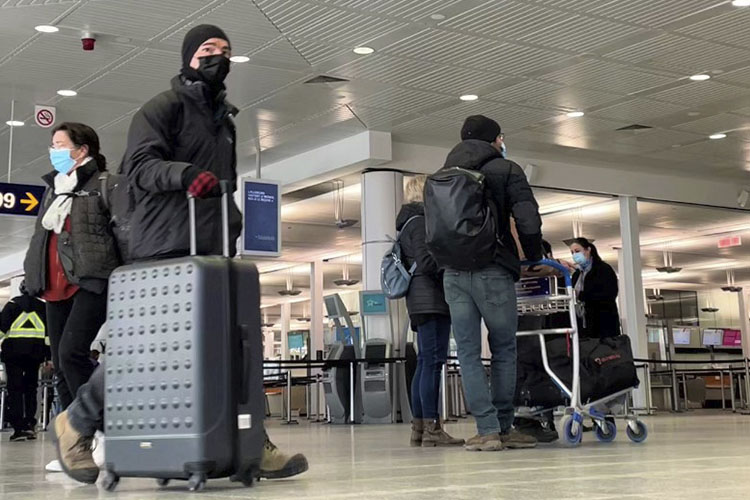
Travellers prepare for a flight at the Trudeau airport. Photo by Reina Ephrahim.
Eric Forest, Corporate Communications Advisor at the Trudeau airport, says the airport is doing their part in maintaining safe air quality.
“Since the year 2000, the City of Montreal has deployed an air quality measurement station on-site at YUL Montreal-Trudeau International Airport,” he says. “According to the data compiled, the air quality is good on the airport site.”
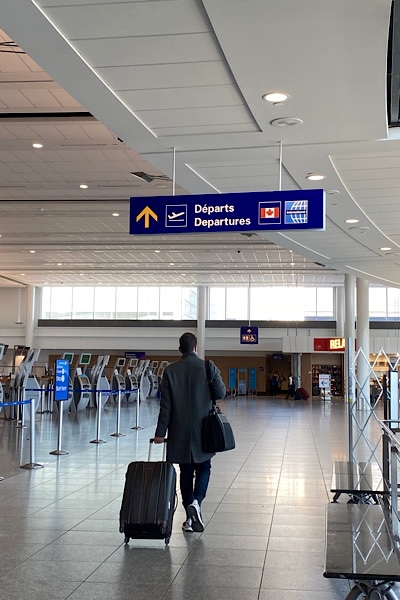
A man walks to departures in the Trudeau Airport. Photo by Chantal Schromeda.
The City of Montreal’s 2020 Environmental Assessment Report shows the air quality at the Trudeau airport was measured at 66 US AQI (Air Quality Index). This measurement falls under what IQAir classifies as moderate air quality. According to IQAir, good air quality is a measurement of 50 and under.
Levine believes if the carbon emissions are dangerous to his health and fellow residents of Dorval, governments need to step in.
“I think that it is a complete dereliction of duty on the part of both the federal and provincial health ministries not to monitor such potential issues,” he says.
Dorval Mayor Marc Doret says the report will be sent to the provincial and federal governments and he hopes both levels of government develop plans to improve the airport’s operations for citizens’ health. The city is also looking into it.
“This report will be evaluated in the coming months by our Environment Committee,” Doret says.
Dorval resident Nathalie Ainsley, says more needs to be done regarding pollution levels at the airport.
“The most important thing is first to make this information accessible and known to as many people as possible, living near airports or not,” she says.
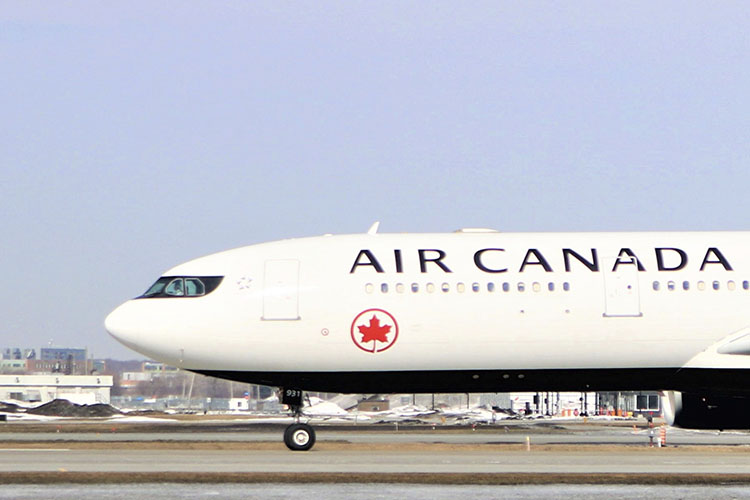
An Air Canada plane waits to take-off on the runway at the Trudeau Airport. Photo by Chantal Schromeda.
Ainsley says that noise pollution and smell from the Trudeau airport has long been a concern. “Sometimes you can smell kerosene,” says Ainsley.
However, she says this is the first time she’s heard of this level of carbon emissions coming from the Trudeau airport. “I find it very worrying,” she says.
Air quality guidelines set by the WHO are not legally binding, but the intention is to influence air quality policy across the globe, and Ariya says regulation needs to happen. “We have to adapt accordingly,” she says. “So, we have to make policies that make more sense.”
Ariya explains that the first step in establishing better policies is identifying and acknowledging the challenge.
“We have to make sure we understand the challenge first,” she says. “We have to evaluate to make sure again that we’re meeting solutions in the short and long term that actually addresses the challenge completely.”
Ariya believes emission reduction needs to be a priority for the Trudeau airport. “If you want to increase your air quality, the best solution is a reduction of emissions and that we can do,” she says. “How do we do it? Don’t expand the airport because in this case you’re going to make more emissions.”
A new 3000 space car park is currently under construction at the Trudeau airport. Future expansion goals include revamping and covering drop-off areas, building a new terminal and a link to Via Rail’s Dorval station.
Jill Baumgartner, McGill Professor of Epidemiology Biostatistics and Occupational Health, studies the health effects of air pollution. She says there are things residents can do to help ease their health concerns.
“People who live on flight paths or next to major highways may want to purchase HEPA filters for their home,” she says. “Especially if they have children or people in the home with other health conditions that might make them more vulnerable to experiencing health impacts of air pollution exposure.”
Baumgartner also notes that Canada has some of the lowest levels of air pollution in the world.
Ariya believes it’s important to get to the root of the problem. She explains that solving emissions may seem like a large task, but there is one thing we already know—pollution can and has decreased.
“We have to do it for the health of our citizens,” she says.
The residents of Dorval want their health prioritised and Levine states that he will do whatever is necessary, even if that means moving. “I would not hesitate to move to Vaudreuil if it is recommended to do so,” he says.

